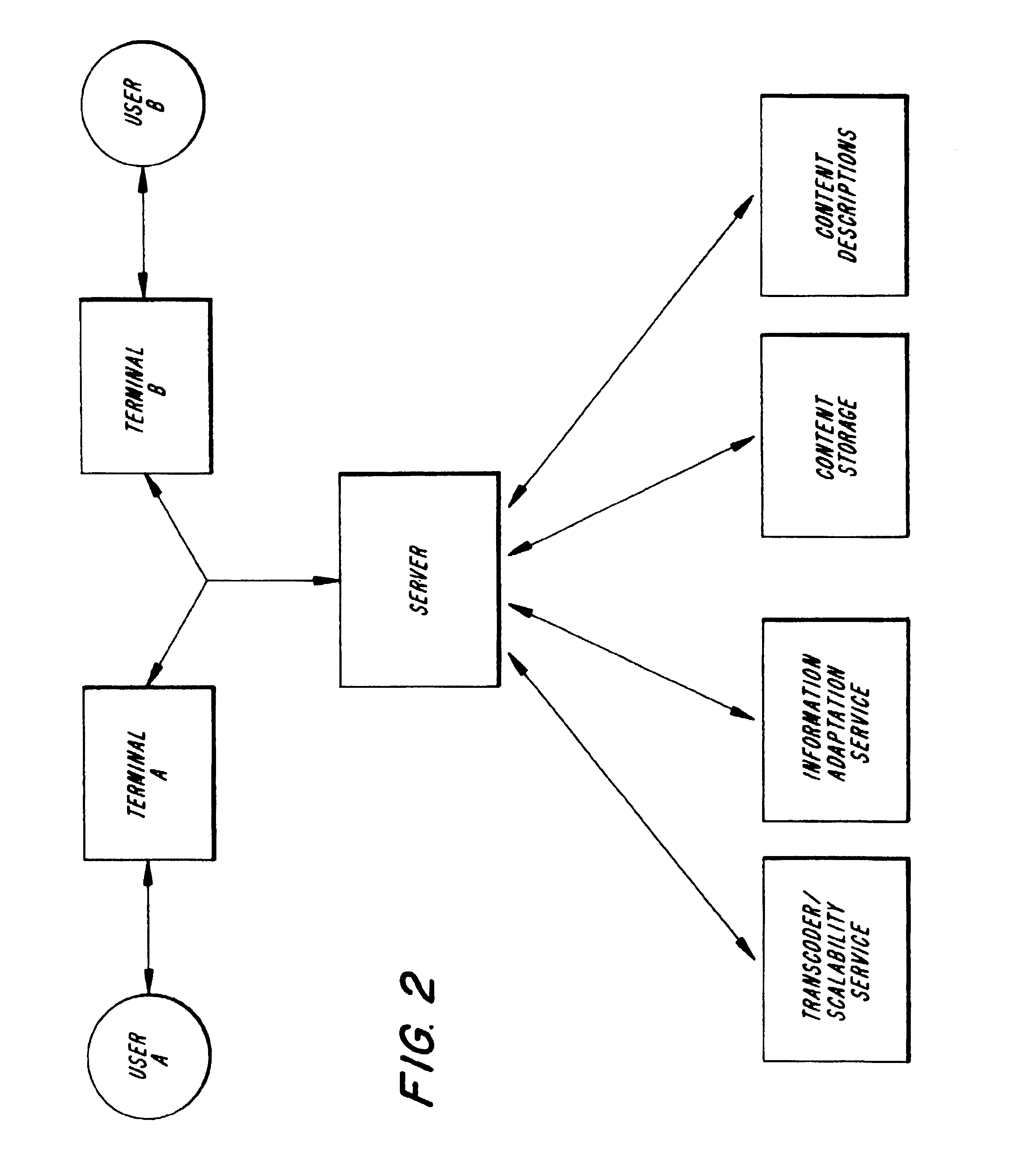Interactive access, manipulation, sharing and exchange of multimedia data
a multimedia object and interactive technology, applied in the field of multimedia, can solve the problems of different terminal capabilities, bandwidth limitations, bit error rate limitations, etc., and achieve the effect of effectively accessing a multimedia object and a multimedia obj
- Summary
- Abstract
- Description
- Claims
- Application Information
AI Technical Summary
Benefits of technology
Problems solved by technology
Method used
Image
Examples
Embodiment Construction
[0032]The various aspects of the present invention are described below in terms of several exemplary embodiments and scenarios. In a first exemplary embodiment, a single end-user in communication with an external device, such as a media server or a camera, is capable of receiving a multimedia services presentation from the external device, and accessing therefrom, one or more multimedia objects in accordance with the various aspects of the present invention. In other exemplary embodiments, two or more users, simultaneously engaged in a conversational multimedia session, access one or more multimedia objects stored in a multimedia database in accordance with various aspects of the present invention.
[0033]FIG. 1 illustrates a technique that permits an end-user to receive a multimedia services presentation from an external device, such as a media server or a camera, in accordance with a first exemplary embodiment of the present invention. Through this multimedia services presentation, ...
PUM
 Login to View More
Login to View More Abstract
Description
Claims
Application Information
 Login to View More
Login to View More - R&D
- Intellectual Property
- Life Sciences
- Materials
- Tech Scout
- Unparalleled Data Quality
- Higher Quality Content
- 60% Fewer Hallucinations
Browse by: Latest US Patents, China's latest patents, Technical Efficacy Thesaurus, Application Domain, Technology Topic, Popular Technical Reports.
© 2025 PatSnap. All rights reserved.Legal|Privacy policy|Modern Slavery Act Transparency Statement|Sitemap|About US| Contact US: help@patsnap.com



